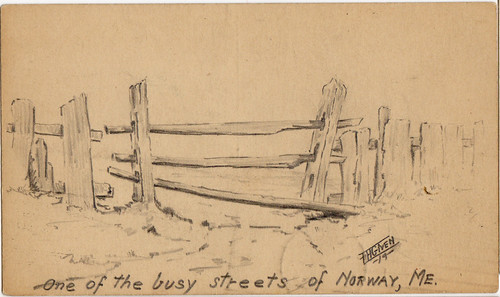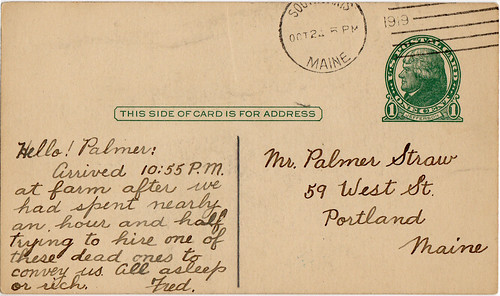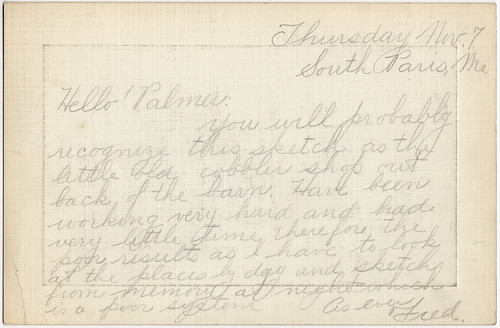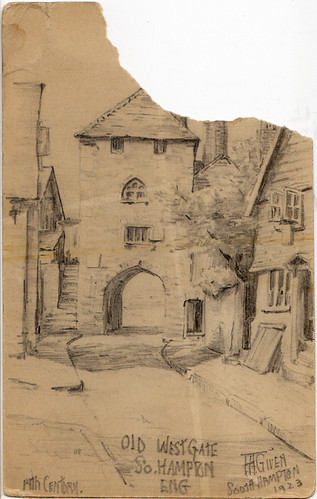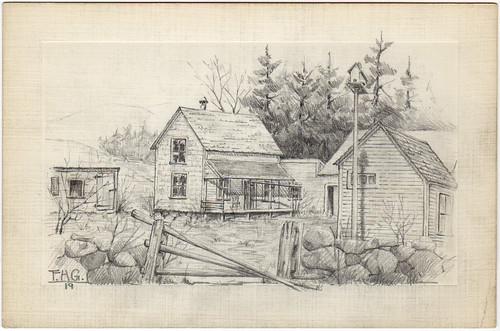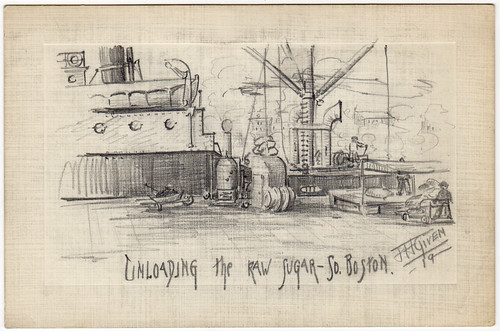Friday, January 30, 2009
Christian Lander on CNN
I'm not sure which I love more, Stuff White People Like or its related predecessor, Black People Love Us!
Monday, January 26, 2009
Coppola on Finian's Rainbow
"Films are like haiku; they express a thought or an emotion in very few words and using just the being of the actors to do it."
—Francis Ford Coppola, from the director's commentary of "Finian's Rainbow"
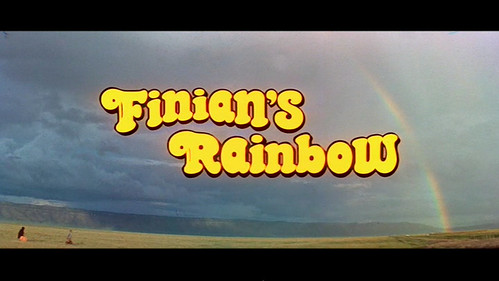
I recently finished Moviemakers' Master Class by Laurent Tirard, a book I picked up in Cannes during the film festival last year. Over the course of reading, I compiled a short list of films I had to watch for homework. One of those films came from this quote by Ethan Coen:
"I remember when we worked with Nicolas Cage on Raising Arizona, we talked about his uncle, Francis Ford Coppola, and told him that Finian's Rainbow, which hardly anyone has ever seen, was one of our favorite films. He told his uncle, who I think has considered us deranged ever since."
So obviously I put down the book and Netflixed Finian's Rainbow. Have you heard of it? No, no you haven't. No one has. It may as well be a Mystery Science Theater 3000 special, except that would've distinguished it some. So I watched it. Actually, I couldn't finish it. I shut it off about when the creepy male lead Woody is romancing his way into Petula Clark's heart by forcing himself on her in the woods at midnight. (They called that courting back in the day.) But today I put on the commentary by Francis Ford Coppola, and found it to be an excellent experience. Much better than watching the belabored 145 minute musical itself.
In the commentary, Coppola explains how he got the job directing the Warner Brothers musical — Fred Astaire's final pic — at age 29, with only a thesis film under his belt. He also critiques his job as a young director, musing how the young Coppola thought his job was to invent subplots and tell the actors where to go. The experienced Coppola says, rather, it was his job to pare down the film to its essence and help the actors follow their best impulses. His commentary nicely complements Tirard's book, which conspicuously lacks a chapter on Coppola.
The movie is overlong, though beautiful and swelled with earnest musical naïveté. A leprechaun turns mortal when his pot of gold is stolen. A mute girl dances to communicate what she can't speak. A racist senator is turned into a black man on a magical wish. You know, musical stuff.
It's an ambitious film, stuck squarely in the tradition of big musicals but with progressive aims and exhausted stereotypes living in awkward coexistence. Coppola tells us what we really want to hear — how his young career dovetailed with the old Hollywood style before departing on a different course of small, personal films, shot on location with handheld cameras, aggressively telling the truth. If nothing else, the movie is worth seeing just for the opening credits, a gorgeous montage of American panoramas from coast to coast. But more to see the curious foundation that launched Coppola's career.
Wednesday, January 14, 2009
If you missed The Dance Party in LA this weekend...
... you're kidding yourself. Los Angeles was rocked fourfold by my friends from DC, The Dance Party. They demolished a small club east of the 5 called The Airliner Thursday night, flamed the Roxy on Friday, played a raging acoustic set streaming live on Boxeight, and finally tore down a place called Cinespace before leaving Monday morning.
The Dance Party make very good music and put on a very good show, two things many bands fail to do. When they toured with my band and Gist on the Indie Roots tour, they helped make a week of mostly-empty venues feel like a stadium tour. Those are my guitars they're playing, so I'm down from day one, like, tight yo.
Dig the erotic slow crane up Mick's body at :35. Kinda makes a guy feel uncomfortable.
The Dance Party is the third DC band I've been able to catch out here in DC since moving in 2007. These United States and Le Loup have both crossed the nation too, and both put on great shows. Lots of good music coming out of the nation's capitol. Click here for more Dance Party photos and stay tuned for more HD...
File under:
dc,
live music,
los angeles,
the dance party,
washington
Thursday, January 1, 2009
Hello! Palmer: The graphic correspondence of Fred H. Given
My family used to summer in Maine, where my grandfather built a cabin. Sometime in the mid-'90s, I visited an auction in Fryeburg or Lovell with my mom. We didn't know much about anything being auctioned. It was mostly antiques and old art, but the mystery of the unknown made everything felt historically important. I think my mom may have won some furniture or old woven rugs. Towards the end, they were auctioning off a pack of original pencil-drawings that seemed to attract little interest.
"Should we bid on them?" my Mom asked.
We did, and we won, since no seemed to care or know anything about them. They were a set of drawings on postcards and notecards spanning from 1917 to 1923, from the artist Fred H. Givens to Palmer Straw of Portland, Maine.
Their correspondence offered a few small mysteries, since we only had one half of the correspondence, most of which detailed Givens' visiting and cleaning up an old farm and camp in South Paris, Maine. When Givens isn't detailing his work on the farm, he's apologizing for the "rather poor" sketches he's turning out. Who were these two? What was their relationship that Frank cared enough to document his travels in sketch and mail them?
Givens' postcards document a few locations beyond his vacationing in Maine, including one from France as early as 1917, others from South Boston and Norfolk, Virginia, and a final sketch from Southampton dated 1923. This last date helps us confirm a few things about Givens.
A passenger list of the Atlantic ship Leviathan on Ancestry.com notes that Givens returned from Southampton on October 15, 1923, in sync with the date of his final postcard. The same document notes that he lived at 61 Smith Ave, Bay Shore, Long Island, was born June 12, 1891 in Auburn, New York and was married.
Palmer Straw is enshrined in the folds of collegiate history. The General Catalogue of Bowdoin College, 1794-1916, lists Straw as a Portland, Maine residence, born July 5, 1887 in Gorham, Maine, and a graduate of the Class of 1911. Another document on Ancestry.com notes that he was "tall, of medium build with brown eyes and dark hair," was listed as a clerk in the Portland City Directory of 1915, and claimed exemption from World War I as "not fit for service" by doctor's orders. He never married, apparently stayed home as a caretaker for his mother, and died young at 57 in June of 1945.
No great revelations from their history, but their incomplete correspondence makes me wonder how they met, why they kept in touch, what Givens did with his artistic skills and if his work ever took a more ambitious form. His postcards offer the equivalent of an iPhoto library today, except each took great deliberation, even if they were dashed off. Where we shoot prolifically, if pointlessly, with our digital lenses, each of Givens' drawings were thoughtfully composed and carefully rendered by hand. Is there more Givens material out there? I'll post more if and when I discover any. See the complete set here.
File under:
drawing,
historical sketches,
maine,
postcards
Coreaudiod not responding - Pro Tools and Mac OS X
For the last year, doing anything with sound on my Mac system has been a major hassle. This is due to a Digidesign bug that causes the Core Audio daemon to stop responding. When this happens, which is always and constantly, I have to trick my system into playing audio through my speakers. Otherwise I'm getting sound through the tiny speaker hidden in the PowerMac beneath my desk.
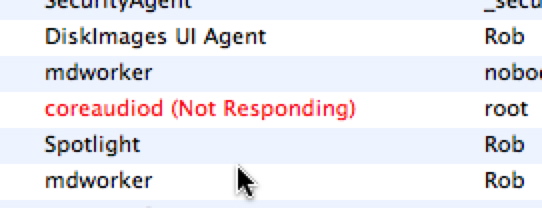
Despite tips suggested in this Apple Support thread and a known issue post at Digidesign Support, tricking my system (G5 PPC Dual 1.8 GHz, OS X 10.5.4) into playing sound involves the following steps:
1. Booting, or rebooting if the CoreAudio Manager has failed during use.
2. Launch Activity Monitor (Applications>Utilities>Activity Monitor).
3. Launch System Preferences and click through to Sound>Output.
4. Launch iTunes (as the quickest path to testing sound output).
5. Highlight "coreaudiod (Not Responding)" and click "Quit Process", enter admin password.
6. Verify that "Digidesign HW (003)" is selected as the output device.
7. Play a selection in iTunes, make sure the Digi 003 isn't muted and speakers are on.
8. If no sound, repeat.
That's a lot of process just to get system sound through the speakers. I must repeat this process if I need to use Pro Tools, because once you've activated the CoreAudio Manager, Pro Tools will think that it's still in use, even after you quit it.
This illustrates the complications of software-driven tools. If the Digi 003 rack was pure hardware (or at least it's input/output were hardware-driven), sound would work as soon as it had power, no fiddling with the OS. Pro Tools is one of the more complex softwares out there, and it feels like Digidesign has a touch of the Windows lack of simplicity. Considering the months to years they take to update Pro Tools for the latest Mac OS, it seems like the protocol could be simplified somewhere. Or rebuilt from the ground up? That said, Pro Tools is really money when it's working...
File under:
coreaudiod,
Mac OS X Leopard,
pro tools
Subscribe to:
Posts (Atom)

